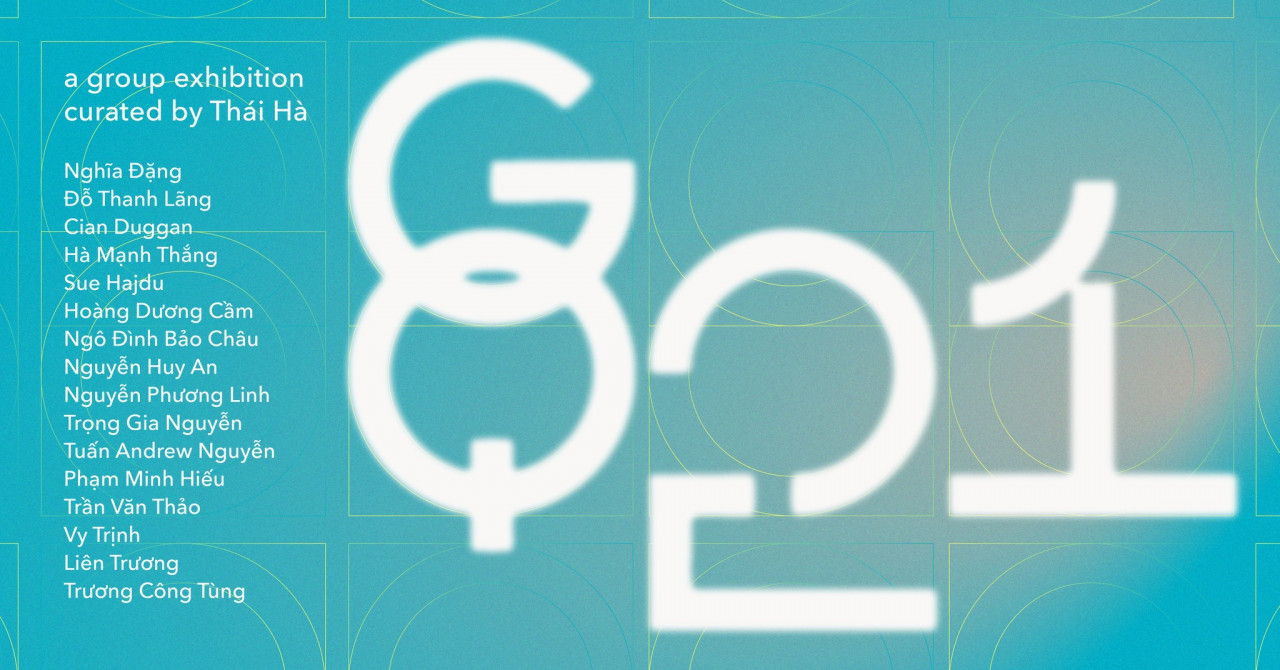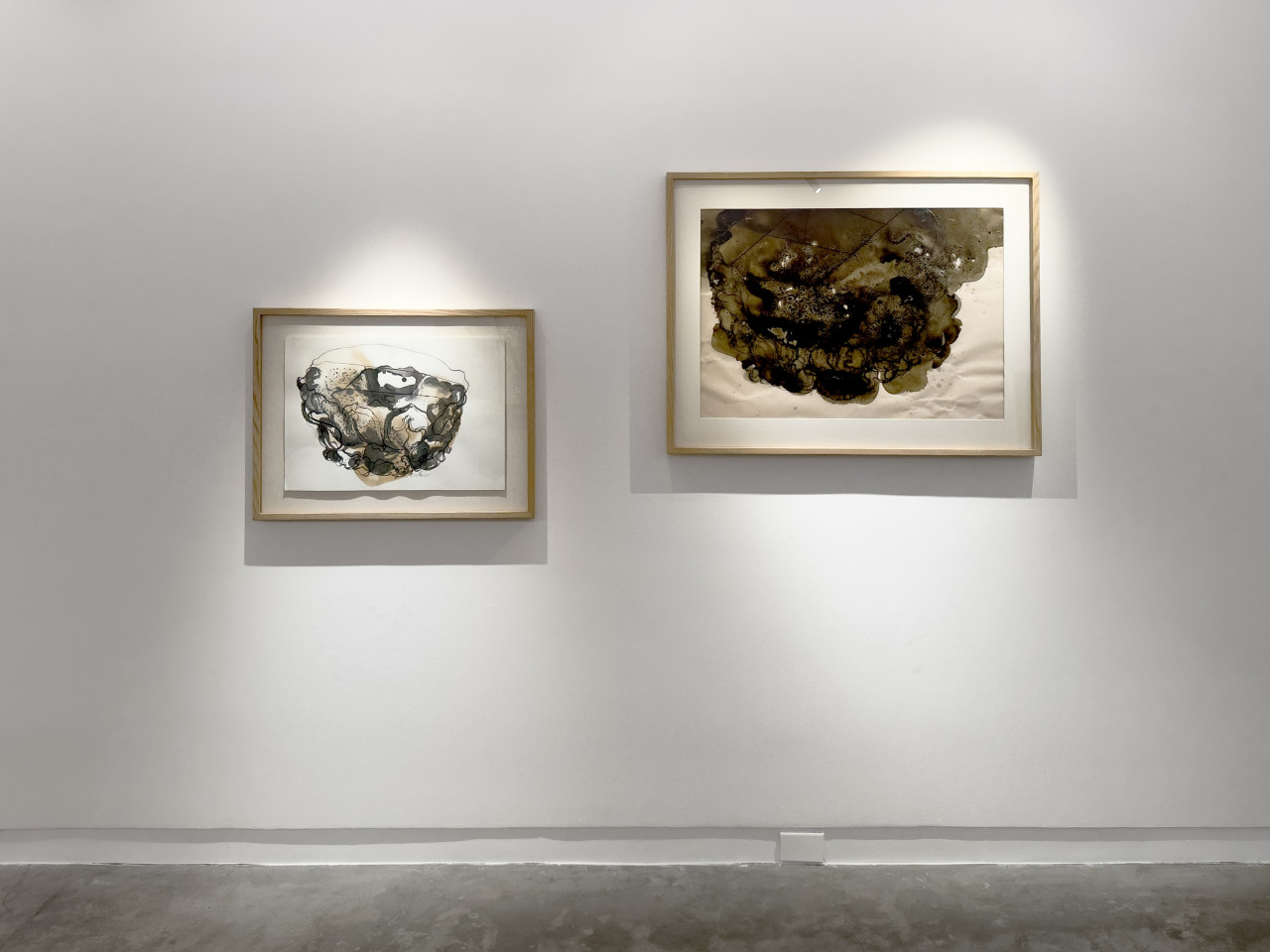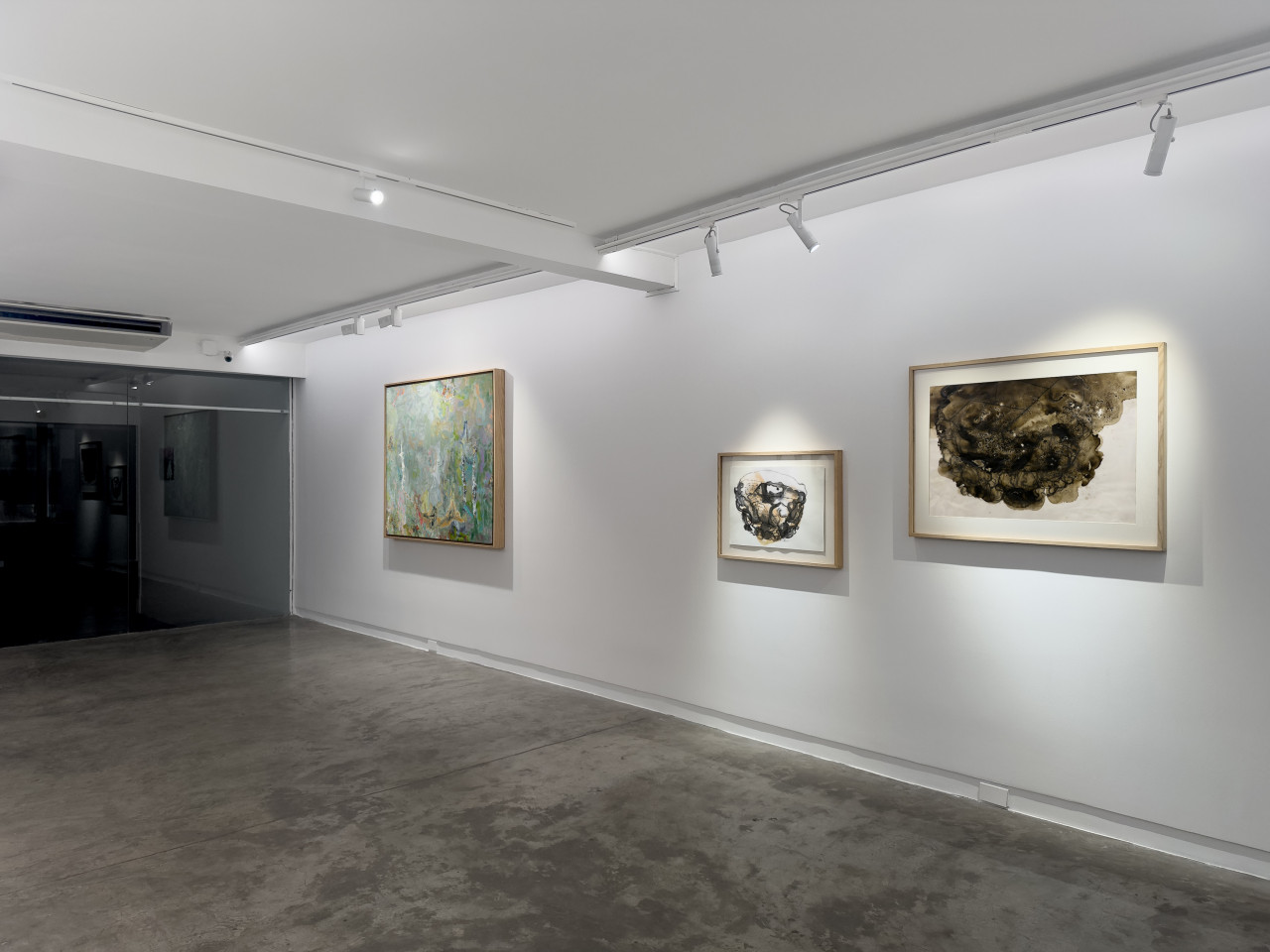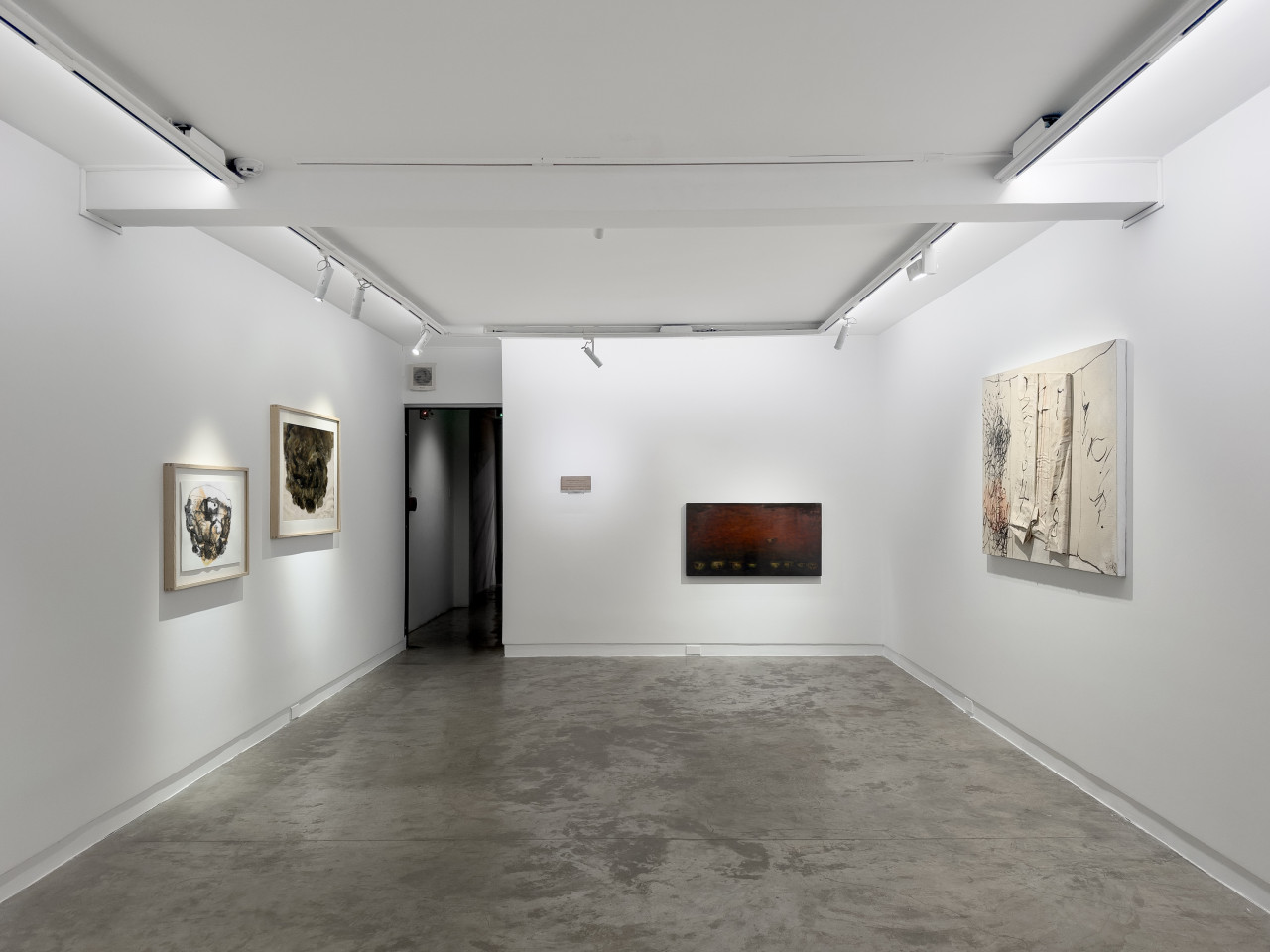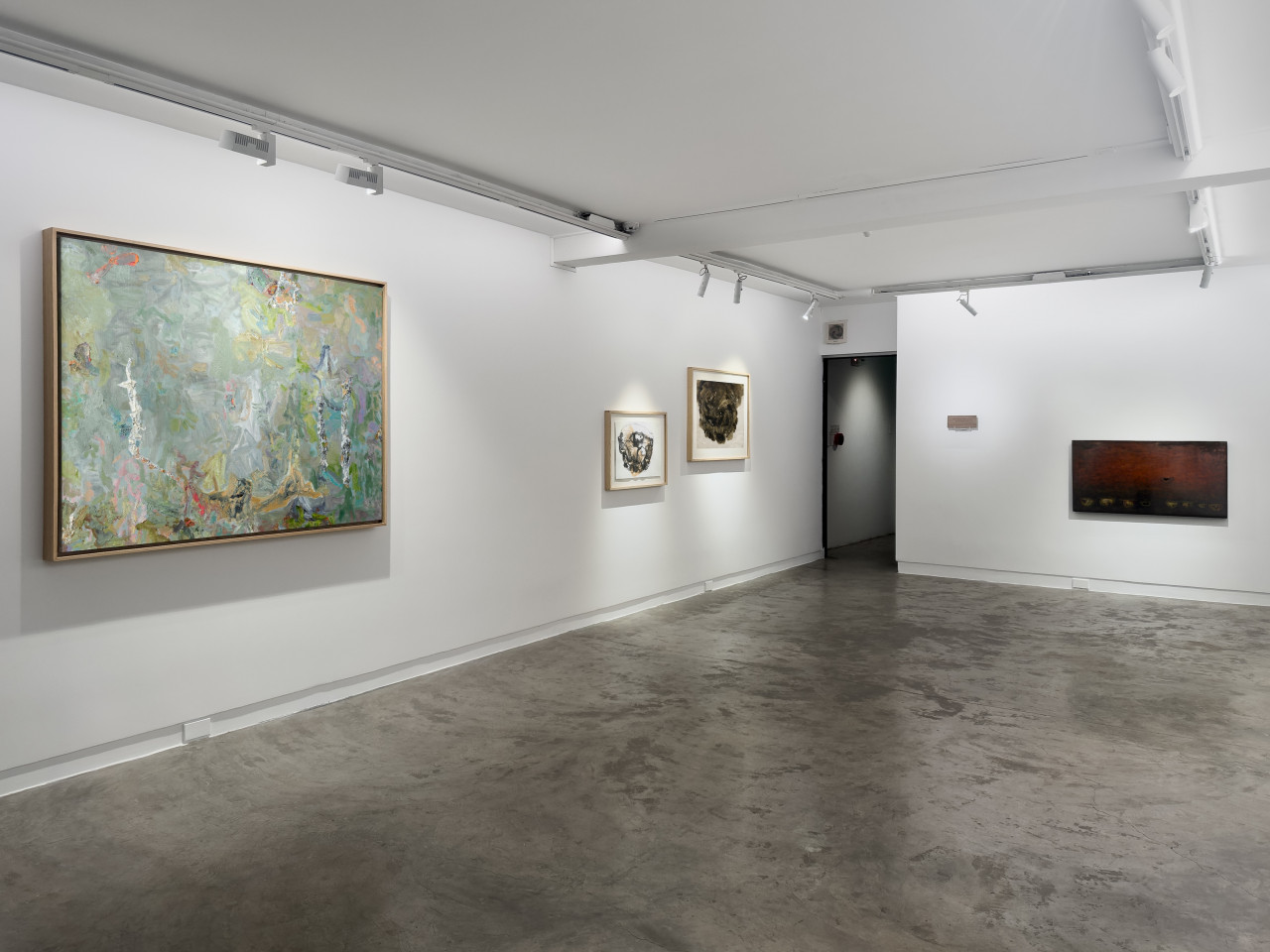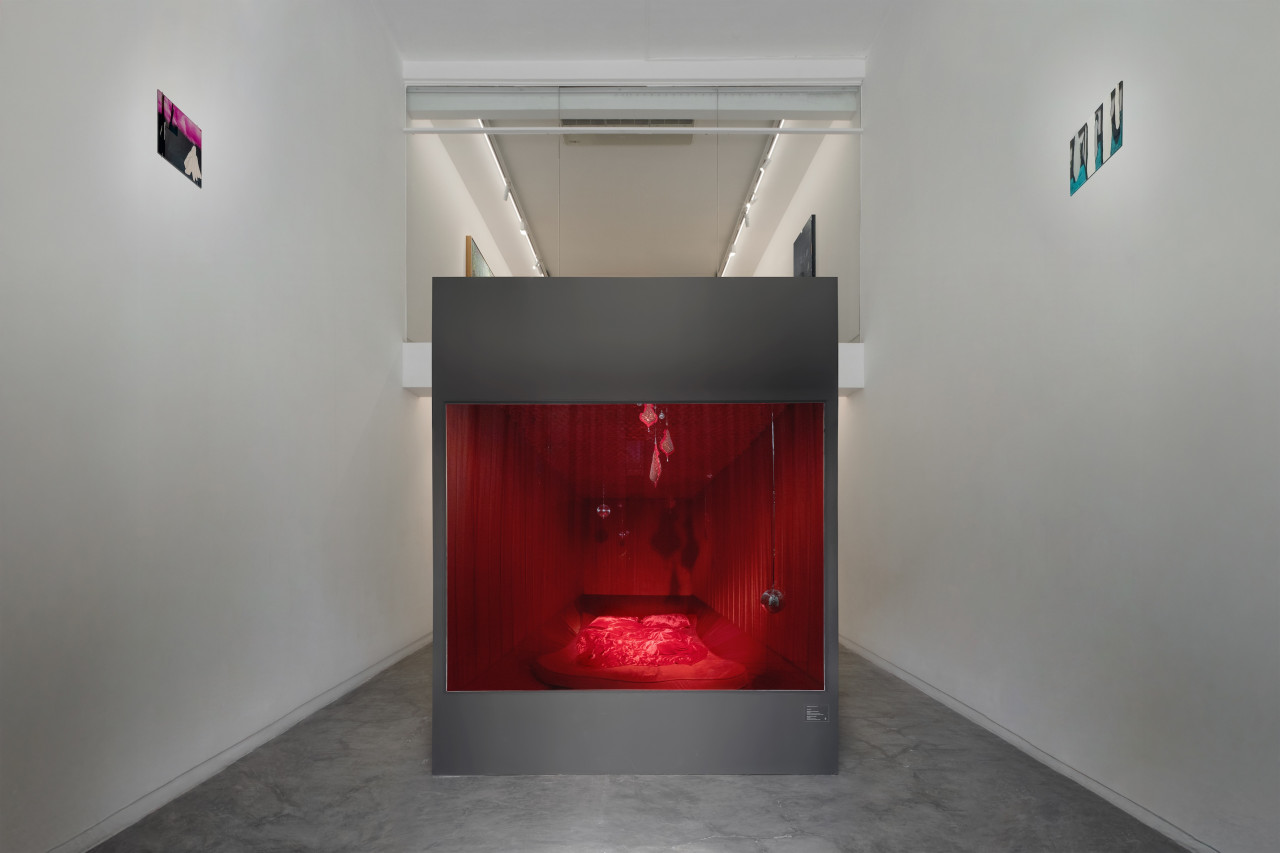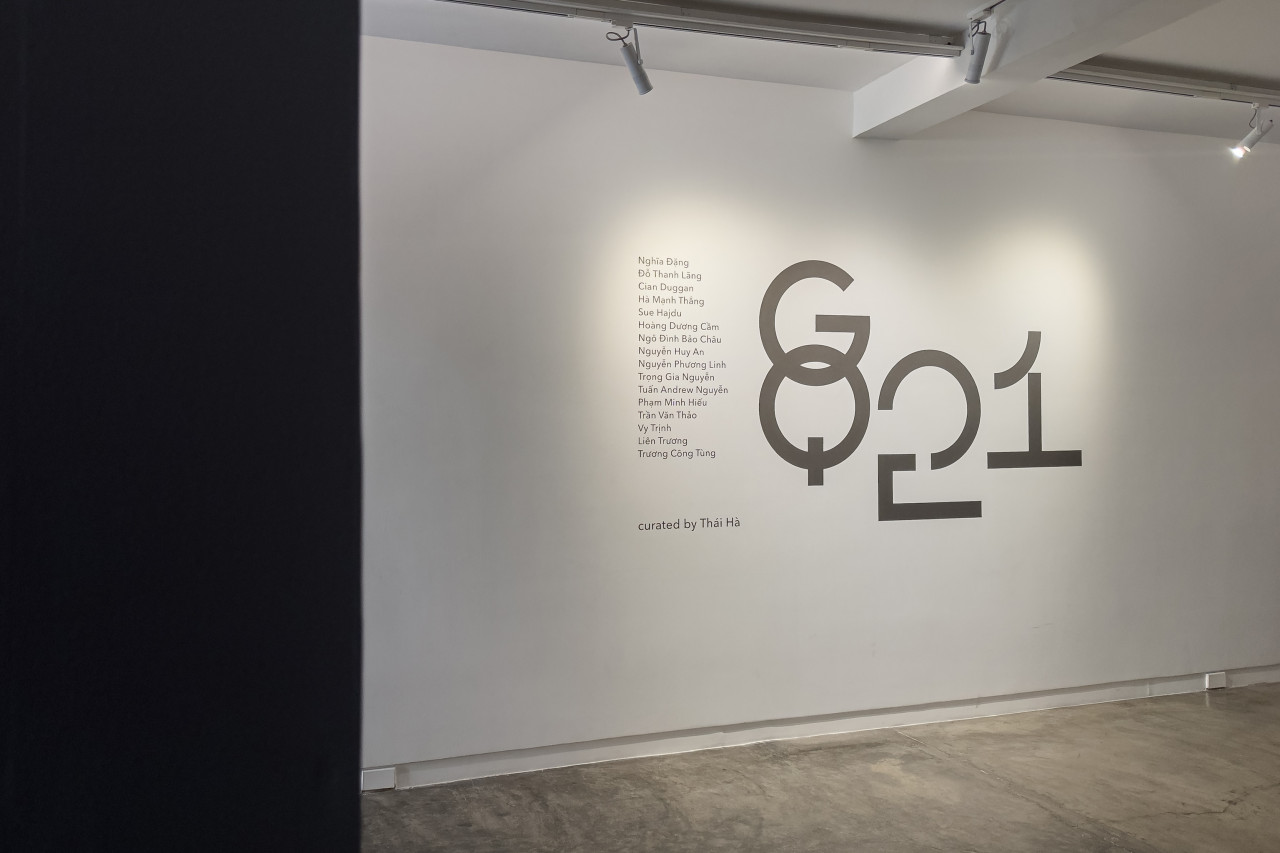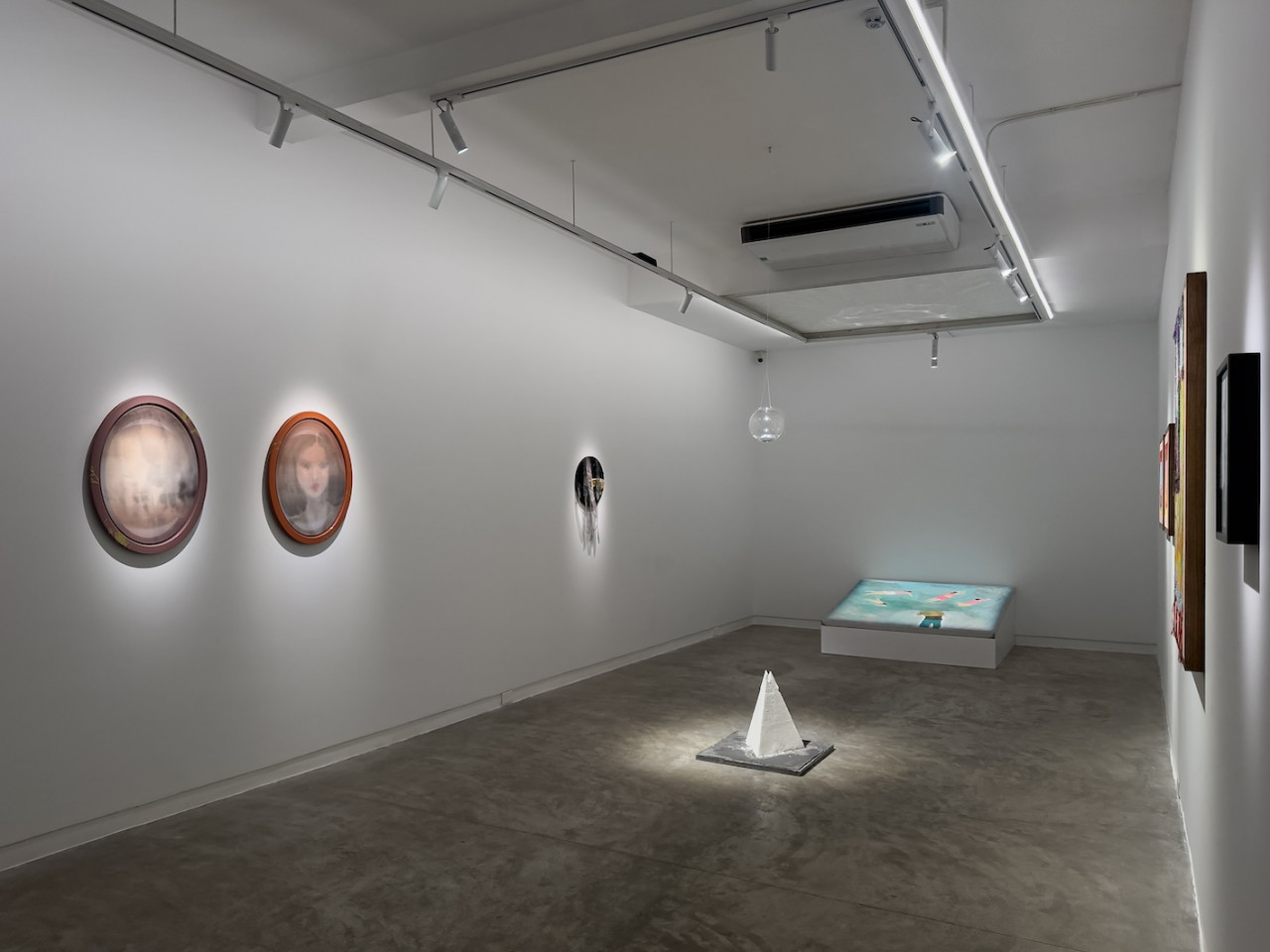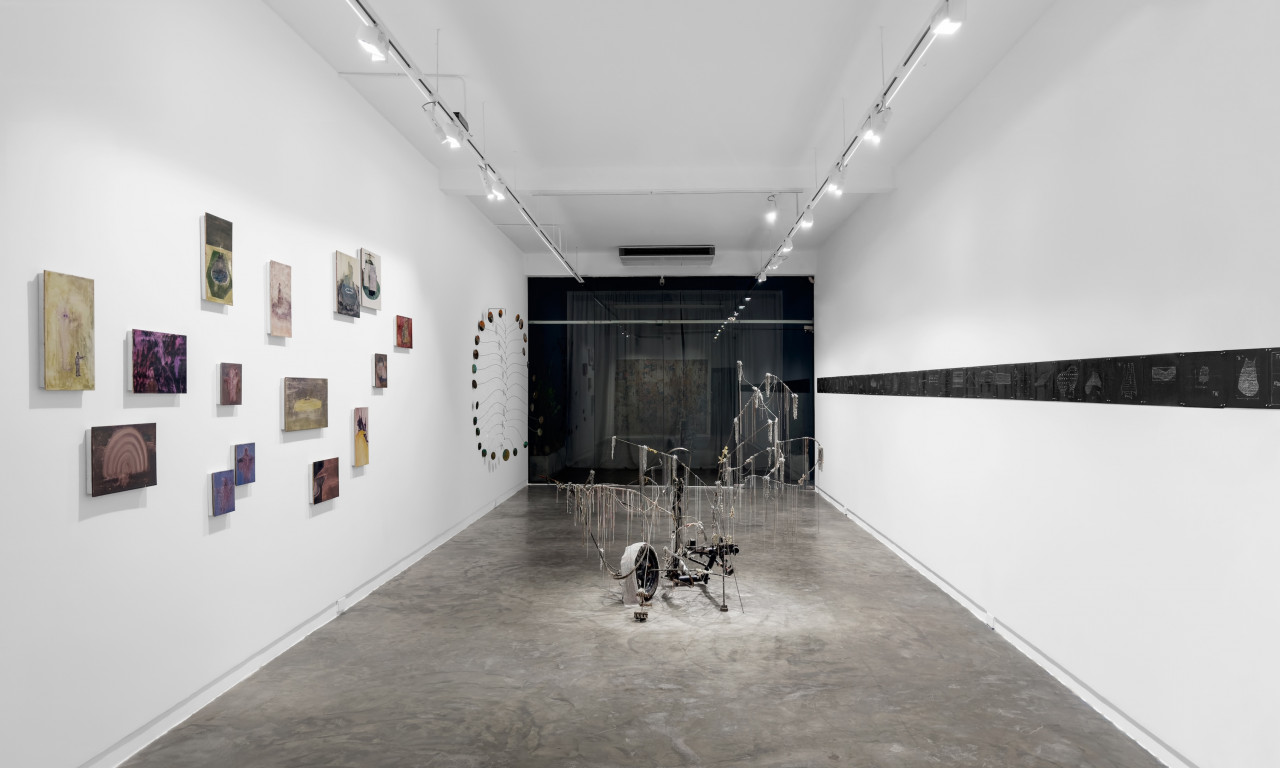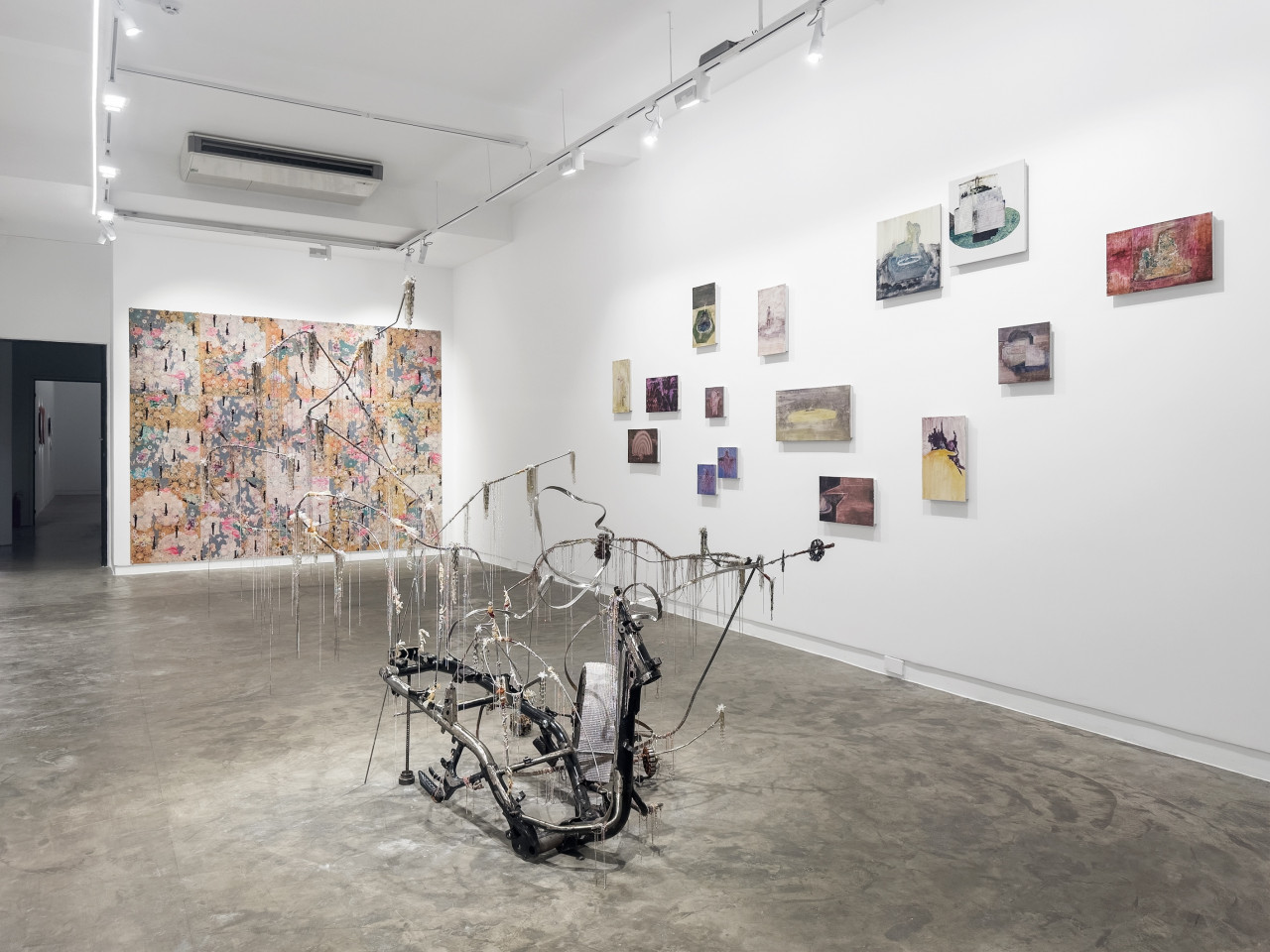Foreword from the Founders
A quick search on the internet for the definition of "Commercial Art Gallery" brought up this question and observation:
A quick search on the internet for the definition of "Commercial Art Gallery" brought up this question and observation:
What's the difference between an art gallery and a museum?
An art gallery is a private and commercial enterprise curating exhibitions with its portfolio of artists while selling the exhibited artworks. In contrast, a museum is a public and non-commercial institution curating an exhibition program for cultural and educational purposes.
An art gallery is a private and commercial enterprise curating exhibitions with its portfolio of artists while selling the exhibited artworks. In contrast, a museum is a public and non-commercial institution curating an exhibition program for cultural and educational purposes.
Galerie Quynh finds itself straddling both these definitions.
The gallery was founded in the year 2000 as an online platform by Vietnamese American art historian Quynh Pham and British artist Robert Cianchi with the initial idea of creating a non-profit educational resource that would document and archive the Vietnamese contemporary art scene; however, it quickly became apparent that something more was needed. There were very few active spaces for contemporary art; lack of public institutions for engendering dialogue with the greater public; lack of support – financial, legal and career-wise – for artists trying to find their footing in the art world; lack of professional framing; lack of professional art handling and conservation practices; lack of art critics and writers; the list seemingly endless.
What was not lacking was the large pool of talented and driven artists who were emerging from the pre-Đổi Mới era, where artists’ talents were put to use for the collective benefit of the country but who were now starting to find their individual voices and developing practices that highlighted each artist’s unique views and interests.
From this realisation the gallery began to grow organically to try to fill some of these gaps. Starting with a series of pop-up exhibitions at the Ho Chi Minh City government exhibition house downtown on Lê Thánh Tôn in late 2000, the gallery opened its first physical space in December 2003 – a small 40-square-meter exhibition room whose impact on the community belied its small size.
Programming was never dictated by the market but rather by a belief in the practices of the artists showcased with the knowledge that, long-term, the best art would endure even if it was not fully understood or commercially viable in the short term. Some of Vietnam’s most established and critically acclaimed artists were given their first gallery show with Galerie Quynh when there was not yet a market for their work.
Today the gallery isn’t just a physical space for the display and sales of art but a living history and testament to the dedication and passion of all the incredible people who were part of the team over 21 years (with brilliant interns and staff who have gone on to become accomplished academics, curators, gallery directors, musicians and more); the local and international artists with diverse practices; the curious public who have been surprised, inspired and sometimes bemused by what they have seen at the gallery; and the collectors and patrons from all corners of the globe who have supported the gallery and provided the means to allow us to continue our fight and growth from that tiny 40m² exhibition space at 23 Lý Tự Trọng through to the 600m² space (and 5th forced relocation) we occupy today.
For its 21st anniversary, Galerie Quynh has invited Thái Hà, one of Vietnam’s most dynamic young curators and a gallery alumna, to curate a special exhibition that reflects on the past but more importantly, looks toward the future.
We are so grateful to everyone who has contributed to this journey helping to build an ecosystem and community for art in Vietnam and we thank you for your continued belief in the work we do. It’s been 21 years of meaningful connections, lively and contentious conversations and inspiring and ambitious projects. Every 7 years is a renewal and in our 21st year, we feel like we are just getting started.
––––––––––––––––
Galerie Quynh invites you to celebrate 21 YEARS OF GALERIE QUYNH, an anniversary exhibition curated by Thái Hà. Featuring 16 artists from the gallery’s current roster as well as past collaborations, the exhibition explores the last two decades of Vietnam as captured in the practices of artists showcased through the gallery’s platform. The ambition and scope of the works on display attest to the gallery’s achievements at this milestone.
From its earliest days of supporting painters working in abstraction, then considered a pioneering genre, throughout the next 20 years, the gallery would support artists who now work at the forefront of contemporary art. At the same time, the gallery helped to expand definitions of Vietnamese art, generating dialogues between artists working locally and in the diaspora. Beyond its exhibitions and commercial activities, it also initiated a range of artist-run community projects in response to the lack of arts education platforms. 21 YEARS OF GALERIE QUYNH is an exhibition that travels through the last 21 years to look forward. It not only marks an anniversary but also presents a slice of history, as told through the relentless work of the gallery and the artists in a paradoxical context that is restricting and yet impossibly dynamic.
Certain chronological moments set the scene. In 2003 – the year the gallery founded its physical space – it would have been just over a decade since the trailblazing, Ho Chi Minh City-based Group of 10 organised the first ever exhibition of Vietnamese abstract art, a genre hitherto not recognised by the state (many of the group’s artists would later feature in the gallery’s earliest programming). A year before that seminal 1992 exhibition, the Soviet Union had collapsed, losing Vietnam a key ally and source of economic aid, prompting it to pursue reforms and re-evaluate its international relations; two years later, the US trade embargo on Vietnam was lifted. As the country opened to the market economy with the introduction of the Đổi Mới policy in 1986, in the decades leading up to 2003, its economic performance would boom yet contrast starkly with its political and social developments.
In such a context, with limited infrastructure that mostly exists to serve a distinct purpose, the work of a gallery extends far beyond that of conventional galleries elsewhere. Alongside artists, the gallery cultivated relationships with audiences and integrated the languages of contemporary art into their visual vernacular. If in 2003, the genre was considered more for those already in the know, two decades later, it has been well and truly cemented into the mainstream, with the constant rise in visitor numbers to the gallery attesting to this transition.
Crucially, earning popularity with viewers holds a different meaning in Vietnam. According to the Institutional Theory of Art proposed by Arthur Danto and George Dickie, galleries, like other institutions in the artworld, hold the power to confer the status of "art" onto an object. While this is true in the Western conception of the artworld, the reality is far more complicated in Vietnam, where the power to define art lies officially with the state and its own cultural institutions. Organisations that fall outside of the state's framework, but that still operate as an institution in Danto and Dickie's definition, find themselves in between. The case could thus be made that non-state institutions in Vietnam are, by definition, "alternative spaces". They embody the work of grassroots organisations, community spaces, and museums, as and when such work is needed.
It is within this context that Galerie Quynh leverages its grey zone status to offer different definitions of art. With its support, artists are uncompromising in turning to satire, critique, humour, and lightness. The gallery is essential in providing greater financial stability, allowing artists to expand their production methods and repertoire of media. Artists could commit to experimentation because the commercial arm of the gallery was never dictated by market demands. To a significant extent, Galerie Quynh’s programming informed the collectorship of Vietnamese contemporary art by supporting artists unafraid to challenge what constitutes “Vietnamese-ness”, “art”, or “Vietnamese art”. In championing artists who work within and outside of approved methodologies and subject matters, the gallery entrenches these alternative practices in the public imagination. That viewers come in their numbers speaks to the growing appetite for modes of expression beyond what is sanctioned by the official canon.
21 YEARS OF GALERIE QUYNH, in keeping with the gallery ethos, captures Vietnam through the work of artists, though not in the simplistic sense that their work is “about” Vietnam. In turn, the exhibition also highlights how artists impact the conditions under which they live. Through new and archive works, as well as a seminal performance re-staged especially for the anniversary, 21 YEARS OF GALERIE QUYNH offers a rare overview of how artistic practices have developed in Vietnam, in spite and because of its socio-political landscape.
Curator: Thái Hà
Exhibiting artists:
Nghĩa Đặng
Đỗ Thanh Lãng
Cian Duggan
Hà Mạnh Thắng
Sue Hajdu
Hoàng Dương Cầm
Ngô Đình Bảo Châu
Nguyễn Huy An
Nguyễn Phương Linh
Trọng Gia Nguyễn
Tuấn Andrew Nguyễn
Phạm Minh Hiếu
Trần Văn Thảo
Vy Trịnh
Liên Trương
Trương Công Tùng
The gallery was founded in the year 2000 as an online platform by Vietnamese American art historian Quynh Pham and British artist Robert Cianchi with the initial idea of creating a non-profit educational resource that would document and archive the Vietnamese contemporary art scene; however, it quickly became apparent that something more was needed. There were very few active spaces for contemporary art; lack of public institutions for engendering dialogue with the greater public; lack of support – financial, legal and career-wise – for artists trying to find their footing in the art world; lack of professional framing; lack of professional art handling and conservation practices; lack of art critics and writers; the list seemingly endless.
What was not lacking was the large pool of talented and driven artists who were emerging from the pre-Đổi Mới era, where artists’ talents were put to use for the collective benefit of the country but who were now starting to find their individual voices and developing practices that highlighted each artist’s unique views and interests.
From this realisation the gallery began to grow organically to try to fill some of these gaps. Starting with a series of pop-up exhibitions at the Ho Chi Minh City government exhibition house downtown on Lê Thánh Tôn in late 2000, the gallery opened its first physical space in December 2003 – a small 40-square-meter exhibition room whose impact on the community belied its small size.
Programming was never dictated by the market but rather by a belief in the practices of the artists showcased with the knowledge that, long-term, the best art would endure even if it was not fully understood or commercially viable in the short term. Some of Vietnam’s most established and critically acclaimed artists were given their first gallery show with Galerie Quynh when there was not yet a market for their work.
Today the gallery isn’t just a physical space for the display and sales of art but a living history and testament to the dedication and passion of all the incredible people who were part of the team over 21 years (with brilliant interns and staff who have gone on to become accomplished academics, curators, gallery directors, musicians and more); the local and international artists with diverse practices; the curious public who have been surprised, inspired and sometimes bemused by what they have seen at the gallery; and the collectors and patrons from all corners of the globe who have supported the gallery and provided the means to allow us to continue our fight and growth from that tiny 40m² exhibition space at 23 Lý Tự Trọng through to the 600m² space (and 5th forced relocation) we occupy today.
For its 21st anniversary, Galerie Quynh has invited Thái Hà, one of Vietnam’s most dynamic young curators and a gallery alumna, to curate a special exhibition that reflects on the past but more importantly, looks toward the future.
We are so grateful to everyone who has contributed to this journey helping to build an ecosystem and community for art in Vietnam and we thank you for your continued belief in the work we do. It’s been 21 years of meaningful connections, lively and contentious conversations and inspiring and ambitious projects. Every 7 years is a renewal and in our 21st year, we feel like we are just getting started.
––––––––––––––––
Galerie Quynh invites you to celebrate 21 YEARS OF GALERIE QUYNH, an anniversary exhibition curated by Thái Hà. Featuring 16 artists from the gallery’s current roster as well as past collaborations, the exhibition explores the last two decades of Vietnam as captured in the practices of artists showcased through the gallery’s platform. The ambition and scope of the works on display attest to the gallery’s achievements at this milestone.
From its earliest days of supporting painters working in abstraction, then considered a pioneering genre, throughout the next 20 years, the gallery would support artists who now work at the forefront of contemporary art. At the same time, the gallery helped to expand definitions of Vietnamese art, generating dialogues between artists working locally and in the diaspora. Beyond its exhibitions and commercial activities, it also initiated a range of artist-run community projects in response to the lack of arts education platforms. 21 YEARS OF GALERIE QUYNH is an exhibition that travels through the last 21 years to look forward. It not only marks an anniversary but also presents a slice of history, as told through the relentless work of the gallery and the artists in a paradoxical context that is restricting and yet impossibly dynamic.
Certain chronological moments set the scene. In 2003 – the year the gallery founded its physical space – it would have been just over a decade since the trailblazing, Ho Chi Minh City-based Group of 10 organised the first ever exhibition of Vietnamese abstract art, a genre hitherto not recognised by the state (many of the group’s artists would later feature in the gallery’s earliest programming). A year before that seminal 1992 exhibition, the Soviet Union had collapsed, losing Vietnam a key ally and source of economic aid, prompting it to pursue reforms and re-evaluate its international relations; two years later, the US trade embargo on Vietnam was lifted. As the country opened to the market economy with the introduction of the Đổi Mới policy in 1986, in the decades leading up to 2003, its economic performance would boom yet contrast starkly with its political and social developments.
In such a context, with limited infrastructure that mostly exists to serve a distinct purpose, the work of a gallery extends far beyond that of conventional galleries elsewhere. Alongside artists, the gallery cultivated relationships with audiences and integrated the languages of contemporary art into their visual vernacular. If in 2003, the genre was considered more for those already in the know, two decades later, it has been well and truly cemented into the mainstream, with the constant rise in visitor numbers to the gallery attesting to this transition.
Crucially, earning popularity with viewers holds a different meaning in Vietnam. According to the Institutional Theory of Art proposed by Arthur Danto and George Dickie, galleries, like other institutions in the artworld, hold the power to confer the status of "art" onto an object. While this is true in the Western conception of the artworld, the reality is far more complicated in Vietnam, where the power to define art lies officially with the state and its own cultural institutions. Organisations that fall outside of the state's framework, but that still operate as an institution in Danto and Dickie's definition, find themselves in between. The case could thus be made that non-state institutions in Vietnam are, by definition, "alternative spaces". They embody the work of grassroots organisations, community spaces, and museums, as and when such work is needed.
It is within this context that Galerie Quynh leverages its grey zone status to offer different definitions of art. With its support, artists are uncompromising in turning to satire, critique, humour, and lightness. The gallery is essential in providing greater financial stability, allowing artists to expand their production methods and repertoire of media. Artists could commit to experimentation because the commercial arm of the gallery was never dictated by market demands. To a significant extent, Galerie Quynh’s programming informed the collectorship of Vietnamese contemporary art by supporting artists unafraid to challenge what constitutes “Vietnamese-ness”, “art”, or “Vietnamese art”. In championing artists who work within and outside of approved methodologies and subject matters, the gallery entrenches these alternative practices in the public imagination. That viewers come in their numbers speaks to the growing appetite for modes of expression beyond what is sanctioned by the official canon.
21 YEARS OF GALERIE QUYNH, in keeping with the gallery ethos, captures Vietnam through the work of artists, though not in the simplistic sense that their work is “about” Vietnam. In turn, the exhibition also highlights how artists impact the conditions under which they live. Through new and archive works, as well as a seminal performance re-staged especially for the anniversary, 21 YEARS OF GALERIE QUYNH offers a rare overview of how artistic practices have developed in Vietnam, in spite and because of its socio-political landscape.
Curator: Thái Hà
Exhibiting artists:
Nghĩa Đặng
Đỗ Thanh Lãng
Cian Duggan
Hà Mạnh Thắng
Sue Hajdu
Hoàng Dương Cầm
Ngô Đình Bảo Châu
Nguyễn Huy An
Nguyễn Phương Linh
Trọng Gia Nguyễn
Tuấn Andrew Nguyễn
Phạm Minh Hiếu
Trần Văn Thảo
Vy Trịnh
Liên Trương
Trương Công Tùng
NOTES ON THE EXHIBITION
Opening Reception: Friday, March 21, 2025 from 6 PM – 8 PM
Exhibition Dates: March 22 – June 21, 2025
Venue: Galerie Quynh, 118 Nguyen Van Thu, Dakao Ward, District 1, Ho Chi Minh City
Contact: [email protected]
Telephone: +84 28 3822 7218
Opening Reception: Friday, March 21, 2025 from 6 PM – 8 PM
Exhibition Dates: March 22 – June 21, 2025
Venue: Galerie Quynh, 118 Nguyen Van Thu, Dakao Ward, District 1, Ho Chi Minh City
Contact: [email protected]
Telephone: +84 28 3822 7218

